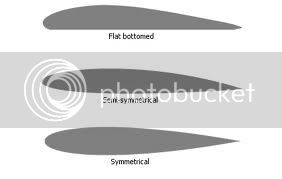RogerS
Established Member
My theoretical understanding is, apparently, wrong!
What do you think?
What do you think?

mailee":23z7wk6j said::?: :?: :?: it would help to know what your theory is first? Air travels faster over the upper surface of the wing creating a lower pressure so lifting the wing, as far as I know :?
RogerS":23z7wk6j said:My theoretical understanding is, apparently, wrong!
What do you think?




RogerS":2jn021bo said:So Theory 1 says that it is the belief of the passengers that it can fly. That's what keeps it up in the air...
... Personally I believe Theory 1.

Steve Maskery":1ubbk3yf said:John
But does you symmetrical wind fly when it is level like that? Surely it only flies when it is tilted up at the front? Or at least, tilted down at the back (ailerons, are they called?). In which case the pressure differential still holds.
S
Jonzjob":29ewci2t said:......
Edit : - Didn't see your reply Roger.. You're learning though ain't yer :mrgreen:

Enter your email address to join: